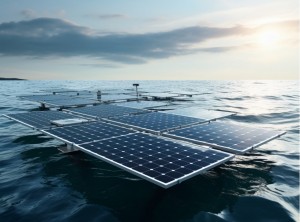Increased solar photovoltaic (PV) capacity will be a central pillar of Southeast Asia’s energy future, and floating installations will play an important role in expanding the region’s renewable energy infrastructure.
Southeast Asia has huge solar energy potential and the region has abundant sunshine, making it an ideal location for solar photovoltaic power generation installations. As Southeast Asian countries seek to reduce their reliance on fossil fuels and shift to more sustainable energy sources, solar energy is becoming a key component of their energy strategies.
One of the most promising developments in the region’s solar industry is the rise of floating solar installations. Deployed on water bodies such as reservoirs, lakes and dams, these innovative systems offer several advantages over traditional ground-mounted solar panels. As well as saving land and reducing land use conflicts, floating solar installations can also benefit from the cooling effect of water, which can increase the efficiency of solar panels and help mitigate the effects of high temperatures in the area.
Several countries in Southeast Asia have already made significant investments in floating solar projects. For example, Singapore unveiled plans to deploy one of the world’s largest floating solar systems at the Tenge Reservoir, while Vietnam has announced ambitious goals to expand its floating solar power capacity.
In addition to environmental benefits, the expansion of solar PV capacity in Southeast Asia is expected to have a positive impact on the region’s economy. The development of solar infrastructure will create new jobs and stimulate economic growth, while also contributing to the region’s energy security and reducing its carbon footprint.
However, there are challenges that need to be addressed to realize the full potential of solar energy in Southeast Asia. These include the need for supportive government policies, adequate financing mechanisms, and the development of local manufacturing capabilities to support the growth of the solar industry in the region.
Overall, there is growing interest in increasing solar photovoltaic capacity, particularly through the deployment of floating installations, highlighting the growing importance of renewable energy in shaping Southeast Asia’s energy future. With the right policies and investments, solar has the potential to play a transformative role in the region’s energy landscape, driving sustainable development and helping to address the challenge of climate change.
Post time: Aug-02-2024
